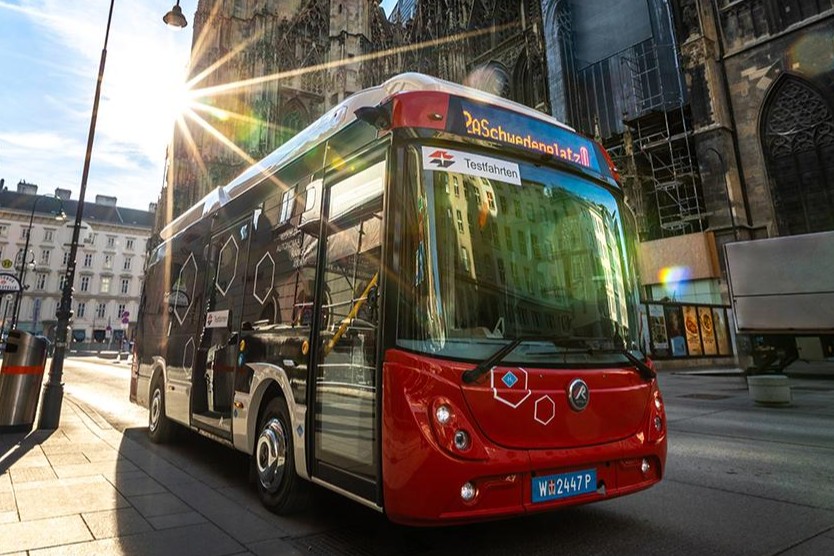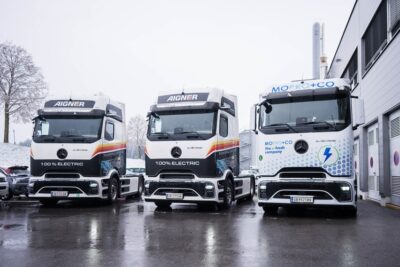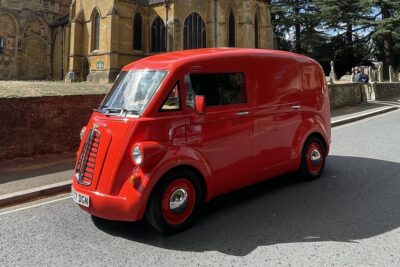Rampini creates dedicated H2 fuel cell systems division
The H2EU Power division will now be operating independently from the Rampini company but says it will be able to benefit from Rampini as an anchor customer with a range of fuel cell power applications.
The new hydrogen fuel cell systems cover the power range from 30 to 140 kilowatts, designed to significantly shorten the development and time to market for interested commercial vehicle manufacturers. The new Rampini division, H2EU Power, says its lineup of hydrogen fuel cell solutions is relevant for a variety of different applications. These range from midi-buses, which the company is known for, up to medium and heavy duty vehicles, and off highway applications, but also for stationary solutions.
The new, independently run Rampini division will be headed by Luigi Fusi, who is responsible for all aspects of commercial operations in the MENA market (Middle East, Europe, and North Africa). Geographically, Italy is in a good position to supply the MENA with connections with abundant renewable energy as well as use cases for hydrogen fuel cell advantages, alleviating grids but also operating in areas with mountainous roads, for example, where fuel cells provide an advantage over battery electric vehicles. The company says it can adapt to different business and manufacturing models to “support customers at every step from early prototyping and homologation to full-scale production.” In this sense, the background of Rampini’s automotive legacy should put it in a good position to understand both automotive as well as refuelling needs.
In terms of infrastructure, bus services provide calculable routes, distances and schedules, making it easier to plan for both hydrogen refuelling for fuel cell models or on/off grid charging for battery electric models. The ability to collaborate with multiple automotive, municipal and stationary energy storage partners increases the opportunity for advantageous collaboration on infrastructure.
Rampini first revealed hydrogen fuel cell buses entirely manufactured in Italy in 2022, as well as smaller buses designed to navigate narrow city streets. Back in 2017, Rampini was tasked with producing seven electric buses for the Austrian public transportation network. The 12-meter buses were put into use in 2018 on the 4A Line. In 2019, electric bus manufacturers Rampini and CaetanoBus agreed to include each other’s models in their respective ranges. In 2020, Rampini collaborated with Siemens to provide infrastructure in Genoa, where the public transport operator AMT chose the E80 from Rampini because the vehicles were the only electric buses in Europe that were agile enough for use in the historic centre of the city.
In 2024, according to Sustainable Bus, following a Europe-wide tender, the Vienna public transport operator Wiener Linien revealed it is investing in ten new minibuses from Rampini. The Hydrogen model is powered by both hydrogen and electricity (see photo above). The ten buses will replace the purely electric Rampini buses on Lines 2A and 3A, which the operator said have “reached their mechanical limits.” The fuel cell range extender ens “the bus can be in use all day without recharging thanks to the range extender technology”, according to the operator, Wiener Linien.“This means that charging infrastructure is no longer required in the city centre and the vehicle fleet for routes 2A and 3A can be reduced from 12 to 10 buses”.
In 2025, the public transport authority will also be using 10 H2 fuel cell buses from Caetano. These and the electric buses with fuel cell range extenders will be refilled and charged at a station operated by Wien Energy and Wiener Netze with green hydrogen produced locally in Vienna.
h2eupower.com (press release), h2eupower.com (website)





0 Comments